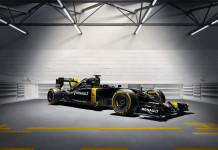India’s Bajaj Auto, making an ultra low-cost minicar with Renault to challenge the Tata Nano, said Wednesday it wants the new compact to be cheaper, greener and deliver “pathbreaking” fuel economy.
The Nano, made by top Indian vehicle maker Tata Motors, sells for 123,000 to 172,000 rupees (2,700-3,800 dollars) and is billed as the world’s cheapest car, pitching itself to the nation’s millions of motorcyclists wanting to trade up.
Bajaj, India’s second-largest two-wheeler maker which is tasked with building the new car by its Renault-Nissan alliance partners, said it is aiming to have the vehicle on the road by 2012 for 2,500 dollars (112,000 rupees).
But the sticker price “is only one part of the equation,” Bajaj managing director Rajiv Bajaj told reporters in New Delhi.
“Our intention is to do a pathbreaking job with fuel economy,” he said.
“We remain very clear whether the car is 100,000 rupees or 150,000 rupees is not what’s important,” Bajaj said. “What counts just as much is mileage, maintenance and carbon emissions.”
The Indian company is focusing on developing a four-wheeler whose “cost of ownership is low enough to motivate two-wheeler buyers to upgrade,” Bajaj said.
“Our aim is to deliver mileage of 30 kilometres to a litre of fuel (71 miles per US gallon),” he said, aiming to better the mileage of the hatchback Nano of 23.6 kilometres a litre.
On average, small cars in India give mileage of 15 to 18 kilometres per litre.
“Our experience with motorcyclists is unless there’s a 50 percent increase (in mileage), it’s not considered good by customers,” Bajaj said. said.
Renault teamed up with Bajaj to make the car as automakers globally try to tap into India’s fast-growing car market. Small car sales represent more than two-thirds of India’s market, driven by rising middle-class incomes.
The design, engineering, sourcing and manufacturing of the model is being done by Bajaj, also India’s top producer of three-wheeled motorised rickshaws.
Bajaj added along with the car, the company would also aims to launch a light truck to meet rising demand for small commercial vehicles to navigate India’s congested city streets.
The new car will have 70 to 80 percent of its parts in common with those used in Bajaj?s scooters, motorcycles and three-wheelers, cutting production costs.
Marketing and sales will be done by French carmaker Renault and Japan’s Nissan Motor whose president, Carlos Ghosn, also recently pegged the new car’s price at 2,500 dollars.
Bajaj added he wanted the car’s carbon-dioxide emissions to set a new benchmark at 80 to 90 grams of CO2 per kilometre driven — far below average Indian emissions of 140-150 grams per kilometre.
The Tata Nano has a CO2 emission level of 101 grams per kilometre.
“Indian motorcycles — be they made by Hero Honda, TVS or Bajaj — they’re the greenest in the world. The excellent technology we have in two-wheelers should be brought to four-wheelers,” Bajaj said.
Bajaj Auto, which unveiled a snubnosed prototype of the car in 2008, has a 50 percent stake in the venture while Renault and Nissan have 25 percent each.




